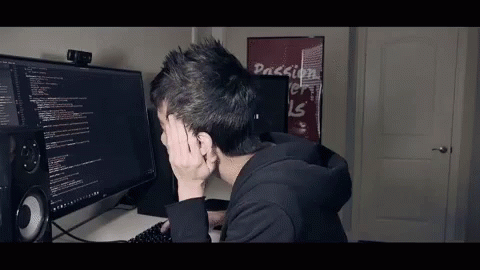The Art Of Messy Code - Chapter 0 : Unconventional Solutions for Challenging Scenarios
In the world of software development, the pursuit of clean and organized code has long been heralded as the gold standard, epitomizing the virtues of maintainable and scalable software solutions. The concept of clean code encapsulates the essence of best practices, with its emphasis on clarity, simplicity, and adherence to established design patterns. Yet, as we venture deeper into the realm of Software Freestyle Engineering, we recognize that the allure of clean code may not always hold true in the face of complexity.
This chapter illuminates the exhilarating journey of embracing complexity, wherein we discern that certain scenarios demand unconventional and creative solutions. As we embark on this exploratory endeavor, we acknowledge the value of clean code and its enduring relevance in many software development contexts. However, the paramount focus lies in unveiling the artistry of messy code—the realm where the Software Freestyle Engineer thrives, navigating intricate challenges with a deft balance of pragmatism and creativity.

The Limitations of Clean Code: Balancing Pristine Structure with Complex Realities
In the domain of software development, the pursuit of clean code stands as an enduring hallmark of excellence, epitomizing the virtues of maintainable and scalable software solutions. Clean code, with its emphasis on clarity, simplicity, and adherence to established design patterns, serves as a cornerstone for fostering an environment conducive to comprehension and efficient collaboration within development teams. By adhering to well-defined coding conventions and maintaining an unambiguous structure, developers ensure that the software's integrity remains unscathed, easing the burden of debugging and facilitating seamless scalability.
Yet, as we navigate the intricate landscapes of software development, we encounter scenarios where the unyielding pursuit of immaculate code may encounter its limitations. In the midst of complex project requirements or stringent time constraints, the rigid constraints of clean code might inadvertently hinder the speed and adaptability required to respond to rapidly changing project demands. These challenges call for thoughtful consideration of the dynamic interplay between the allure of clean code and the allure of embracing complexity.
4 Example Use Cases
- Agile Software Development Projects
In the realm of agile software development, projects often unfold in an iterative and adaptive manner, with evolving requirements and frequent adjustments. In such contexts, the rigid structures prescribed by clean code practices may prove inhibitive, as they may impede the rapid incorporation of new features or modifications. Embracing complexity in agile projects allows Software Freestyle Engineers to dynamically adapt to changing project needs, quickly prototyping and experimenting with unconventional solutions to address evolving challenges.
- Innovative Prototyping and Proof-of-Concepts
When exploring cutting-edge technologies or groundbreaking concepts, the Software Freestyle Engineer may find themselves at the frontier of uncharted territory. In these innovative prototyping and proof-of-concept endeavors, clean code guidelines might limit the scope of exploration, as adhering strictly to established patterns may stifle creative experimentation. By embracing complexity and allowing for the "messiness" inherent in early-stage projects, developers can explore unconventional solutions that pave the way for revolutionary breakthroughs.
- Time-Critical Projects with Tight Deadlines
In time-critical projects where swift delivery is paramount, the Software Freestyle Engineer might need to navigate a delicate balance between clean code practices and timely project execution. While clean code is foundational for long-term maintainability, excessive adherence to it may impede the agility required to meet tight deadlines. In such cases, embracing complexity allows developers to make calculated trade-offs, delivering functional results in a timely manner while ensuring the code's overall integrity through planned refactoring.
- Complex Algorithmic Implementations
In projects that involve intricate algorithmic implementations or data processing, clean code practices may not adequately address the unique challenges presented. By embracing complexity and delving into "messy" coding practices, Software Freestyle Engineers can explore creative solutions that optimize performance or overcome algorithmic bottlenecks. While these implementations may deviate from traditional clean code standards, they result in efficient and highly performant solutions that yield tangible benefits.
The juxtaposition of clean code principles and the allure of embracing complexity underscores the multifaceted nature of software development. While clean code remains an indispensable pillar for ensuring software integrity and maintainability, it is essential to recognize that certain real-world scenarios may warrant the embrace of unconventional approaches. Agile projects, innovative prototyping, time-critical endeavors, and complex algorithmic implementations are among the many contexts where embracing complexity allows the Software Freestyle Engineer to unleash their creativity and ingenuity, crafting extraordinary software solutions that transcend the boundaries of conventional norms. As we navigate the dynamic landscape of software development, thoughtful integration of clean code and the artistry of messy code lays the groundwork for innovation and excellence in the ever-evolving world of software engineering.